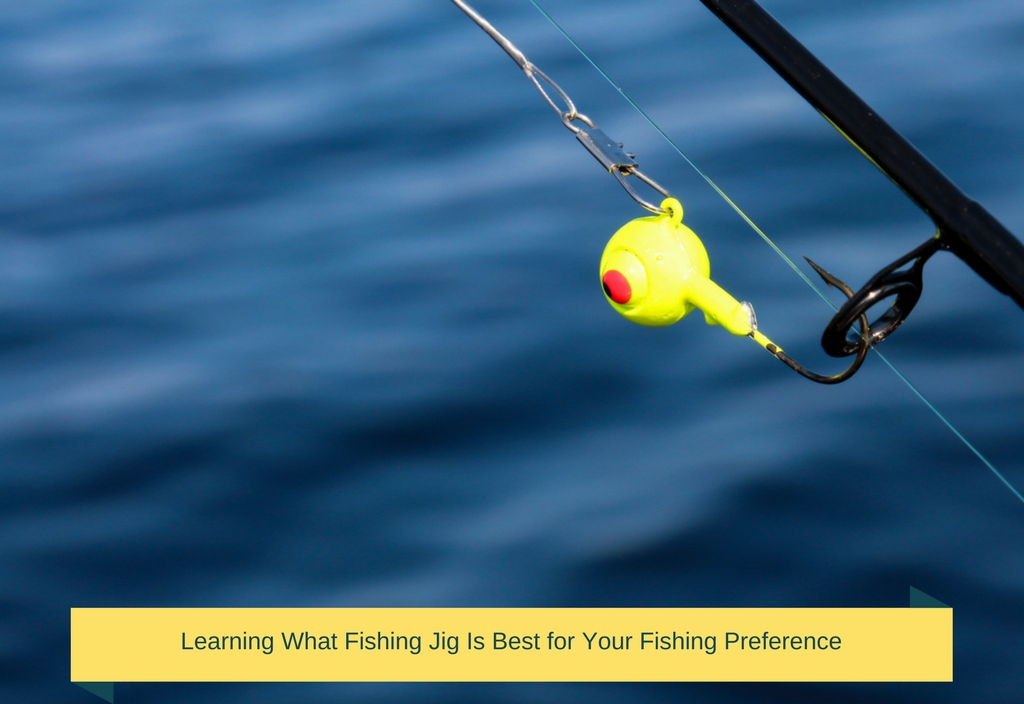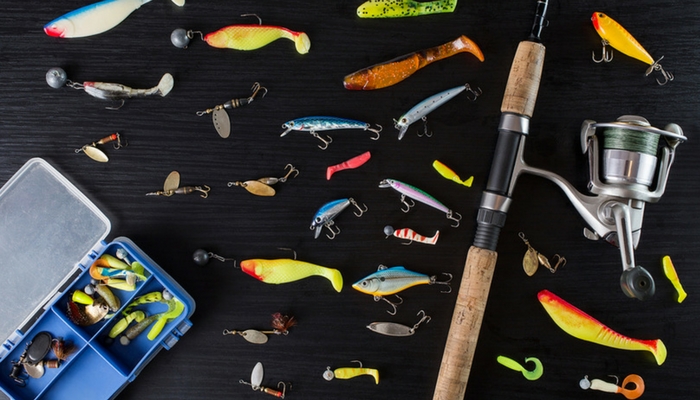 A fishing jig consists of a lead sinker with a hook that has been molded into it, and it is then typically covered by a soft body. The jig, or lure, is then used to attract fish while fishing. Jigs are also designed to be able to mimic movement in the water, meaning they can create jerky and vertical motions in the water which further help to attract fish.
A fishing jig consists of a lead sinker with a hook that has been molded into it, and it is then typically covered by a soft body. The jig, or lure, is then used to attract fish while fishing. Jigs are also designed to be able to mimic movement in the water, meaning they can create jerky and vertical motions in the water which further help to attract fish.
Fishing jigs are something every angler will learn about at some point, and some anglers even feel that fishing jigs are the most versatile lures you can find. However, there are many different jigs to choose from which can sometimes make the task of choosing the right one to use a very daunting and even challenging and overwhelming process.
To find the best one, you should first learn what fishing jig would be the best for you depending on your specific fishing preferences.
Types of Fishing Jigs
Skirted jigs are the best lure to choose when you are looking for bass fish. Skirted jigs have been designed to mimic a crawfish and are lead headed bass lures that easily mimic the type of food that bass would go for.
It is important to understand that jigs come in different shapes and sizes and are all designed for different applications. Most jigs also have a trailer, and the hook will also vary depending on the type of fish you are looking to reel in.
Skirted jigs, for example, can be divided up into a few various categories including flipping jigs, casting jigs, and bladed swim jigs, just to name a few.
Flipping Jigs
Flipping jigs are fitted with a big hook and an Arky style head. This type of jig is designed to be able to pierce through heavy cover to get to the bass fishes hiding spots easier. In this kind of cover and these conditions, you will also want to consider using a heavier line and a heavier rod due to all the obstacles you may come across.
Flipping jigs are best if you prefer to fish for largemouth and smallmouth bass. They have a very low-profile head design and are lighter in weight for smallmouth bass, and also come in heavier weights that are good for largemouth bass. They will typically also come with some form of a weed guard along the internal rattle for when you end up fishing in the weeds.
Casting Jigs
Casting jigs have a smaller head design and are usually fitted with smaller and lighter wire hooks. These jigs are used for casting, as their name implies. They are better utilized in clear and cold-water conditions such as lakes where you can find a plethora of spotted and smallmouth bass.
They also usually include a weed guard and are also considered multipurpose jigs and can be used with or without a rattle.
Bladed Swim Jigs
Bladed Swim Jigs can usually be categorized somewhere between a regular swim jig and spinnerbait. These jigs offer vibration and can be used effectively in shallow or deep water. There are also assorted colors available and different patterns to better mimic food the bass would typically want to eat.
Swim jigs usually offer something sharper and narrower which will allow for better penetration. They also have a bullet-shaped head design to easily go through cover, and they also feature a lighter weed guard.
What You Should Know about Jigs
Most jigs are usually weighted and are also typically made from a lead material which allows it to have the weight it needs. The jig heads also have different designs including round heads, tube heads, bullet heads, and stand-up heads among others. The type of head you choose should be determined by the kind of fishing you will be doing and what you will require.
For example, a bullet head is best for cutting through the water more quickly because of its very streamlined profile. A stand-up head has a flat-bottom design which allows it to lie on the bottom when still and also causes some level of water resistance.
After considering all the different head designs that are available, you will then have to consider the right color jig head. Choosing which color to use is based more on the angler and his level of confidence and fishing preference, rather than the conditions they will be fishing in.
Several anglers will choose a two-tone jig because they will have more of a chance of catching the fish they want. The other jig colors you can find are natural, metallic, and even glow colored. You can also find clear jigs that are just painted with a protective clear coat to help keep them in decent shape.
If you plan on fishing in shallow or darker water, then presenting a jig that is more black or blue in color may prove to be more beneficial. For deeper water that is also clear, then brown or purple jigs will work. If the water is shallow and clear, then you may opt for more of a green colored jig.
Many anglers that are interested in bass fishing will gravitate toward fishing jigs that are brown or darker in color, while some anglers will tell you that the color of the fishing jig isn’t that important.
Jigs for Different Conditions
First Jig of the Day: The first jig of the day should be an abyss, cranky, or arc and should be used to assess the current conditions. Dropping a jig will also help you determine how vertical you are, how the current is moving, and what kind of fish it will attract.
Jigs for Slower Conditions: If you get to your fishing venue and begin to monitor the conditions and find that the fish are moving slower, and the current is not really moving at all, then a rector is a jig that will work in these conditions, as long as there is vertical alignment.
Jigs for Faster Currents: If you find that the current is moving faster than you expected than you would have more luck choosing a spunky, messiah, or arrow jig. A spunky jig, for example, falls quickly and shows more energy in its actions. It is also a useful jig if you find that it is harder to remain vertical.
Conclusion
When determining your fishing preference, it is important to consider the type of fish you are hoping to catch, as well as the conditions you will be fishing. Depending on the current, alignment, and fish in the area, you may have to choose a different jig for each occasion.
As mentioned earlier, dropping the first jig of the day will help you better assess the conditions and will help you greatly when it comes to choosing which fishing jig will work the best for that particular fishing trip. Therefore, having a variety of fishing jigs in your tackle box may prove to be beneficial in the long run.


